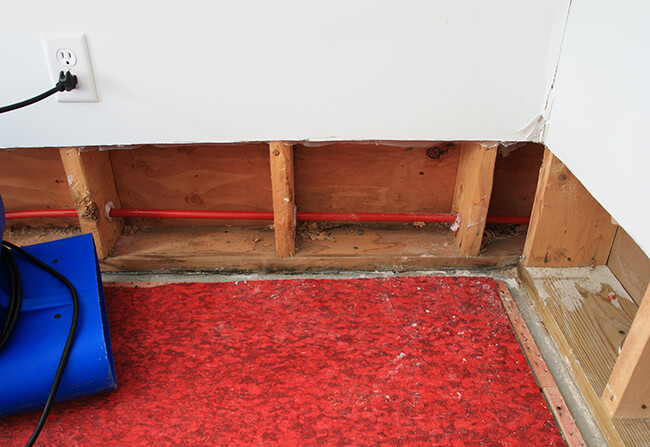Essential Checklist When Your Basement Floods

A flooded basement is a nightmare for all homeowners. Not only is your personal safety at risk, but you could lose precious personal items and risk long-term damage to your home.
Here is an easy to follow checklist of things to do when your basement floods:
Safety First
- Allow water levels to fall before entering due to electrocution and sewage contamination danger.
- Shut off electricity at the main
- Put on rubber gloves and waterproof boots. Do not touch your face when in the flood zone. Remember: The possibility of infection is elevated when you are in and around flood waters.
- Don’t use water fixtures below flood level. The water could be contaminated. Disinfect water by boiling for at least two minutes.
- Check for an odor of gas. If you suspect a leak, call 9-1-1.
Clean Up
- Notify your insurance company.
- Salvage or protect furnishings or possessions that have not yet gotten wet by moving them to dry areas. Quickly remove items from flood areas. Let everything air dry (in the sun if possible).
- Remove standing water. This may mean calling the local fire department or other agencies that have special pumping equipment. Use a pump to get water out of flooded basements gradually. This typically will mean removing about one-third of the water per day to avoid structural damage. If the water completely pumped out is a very in a short period of time, you could have an even bigger problem. Mounting pressure from water-saturated soil outside of your home could cause basement walls to collapse.
- Remove stored chemical agents such as pesticides from the area.
- Wash walls, floors, and faucets with clean water, followed by warm water and soap.
- Decontaminate equipment with 8 tablespoons chlorine bleach per gallon of water. Don’t mix ammonia and bleach. They produce toxic fumes.
- Washable rugs, cushions and foam rubber mattresses can be washed in hot water with bleach. Toss out anything doubtful.
- Throw away wet food, food unrefrigerated for more than six hours and frozen foods thawed for more than four hours.
- Replace wet drywall and floor trim to prevent mold after your flooded basement cleanup. If a floor was wet, even if water did not rise up the walls, remove no less than the bottom 12″ of drywall as well as any floorboard trim. Water sitting on a floor surface can get under woodwork and pull moisture in to the wall cavity. This could lead hidden problem mold in the wall.
- Dry out exposed areas of the building dry out using dehumidifiers, fans, and heaters. Simply adding fans on floors indoors, and particularly, pointed at wet surfaces, can also significantly speed the dry out process far beyond what an indoor dehumidifier can do if used alone.
Call The Professionals
- Before using, have your HVAC system and other appliances inspected by qualified technicians. After inspection, replace all air filters.
- Inspect the building more thoroughly for structural damage and safe entry. Temporary structural reinforcement may be necessary to prevent building collapse before entering some buildings for further inspection or for salvaging contents.
- Check for mold. This means within 24-48 hours all of the critical steps need to be taken if you want to maximize the chance of avoiding a costly mold cleanup project. A mold remediation professional can quickly and efficiently remove mold that has already formed and help prevent any further mold from forming.
Finding water where it shouldn’t be can be problematic for any homeowner. However, quick action can mean the difference between a small mess and ongoing headaches in the future. If you find yourself concerned about mold from water damage in your basement contact the professionals at Mold and Air Quality for a free estimate.
